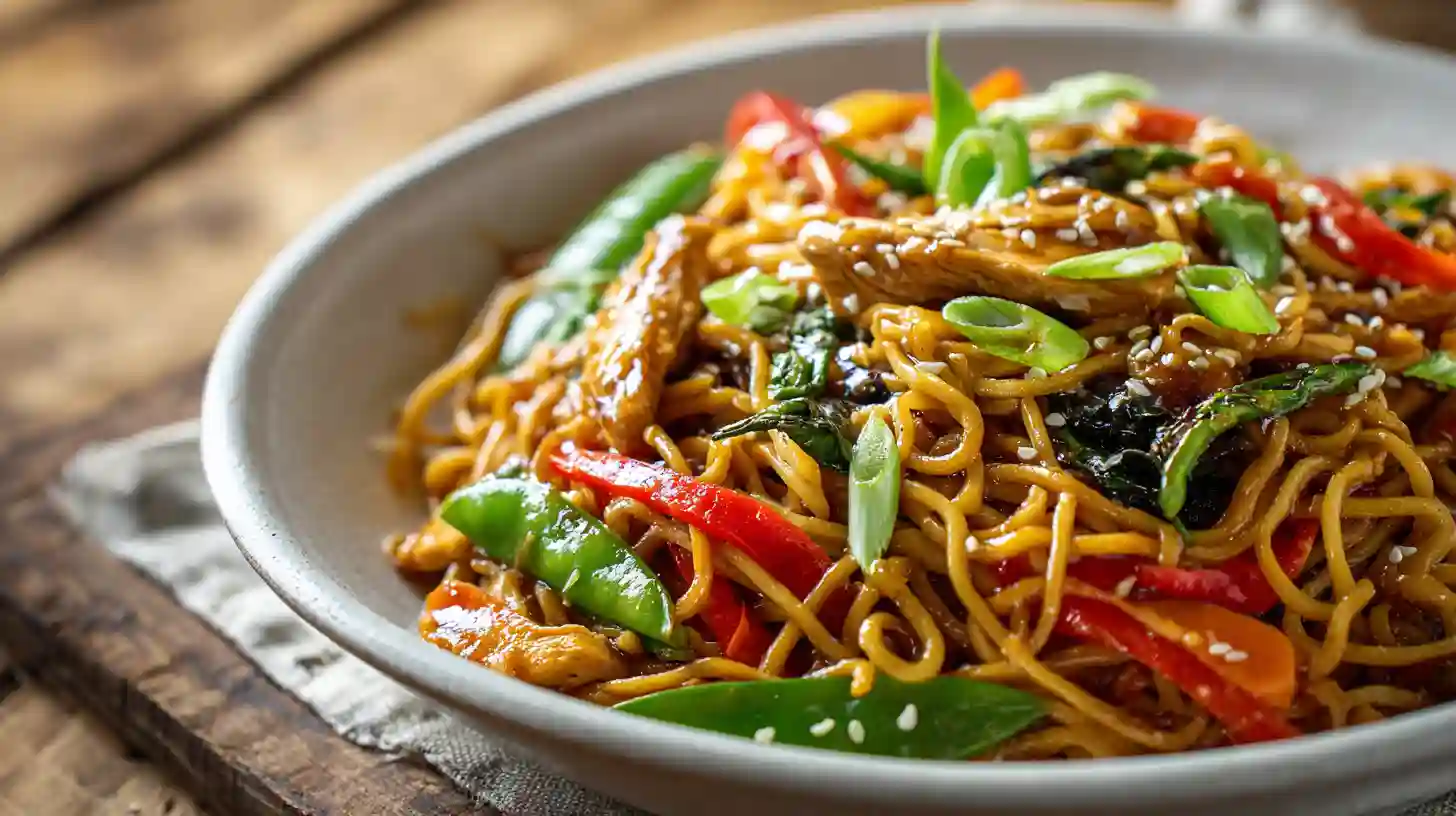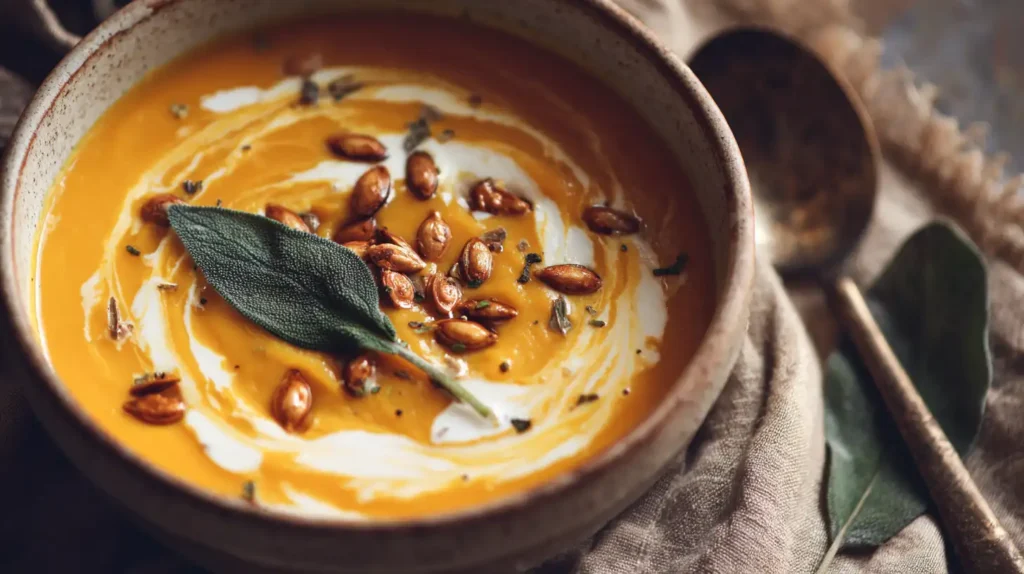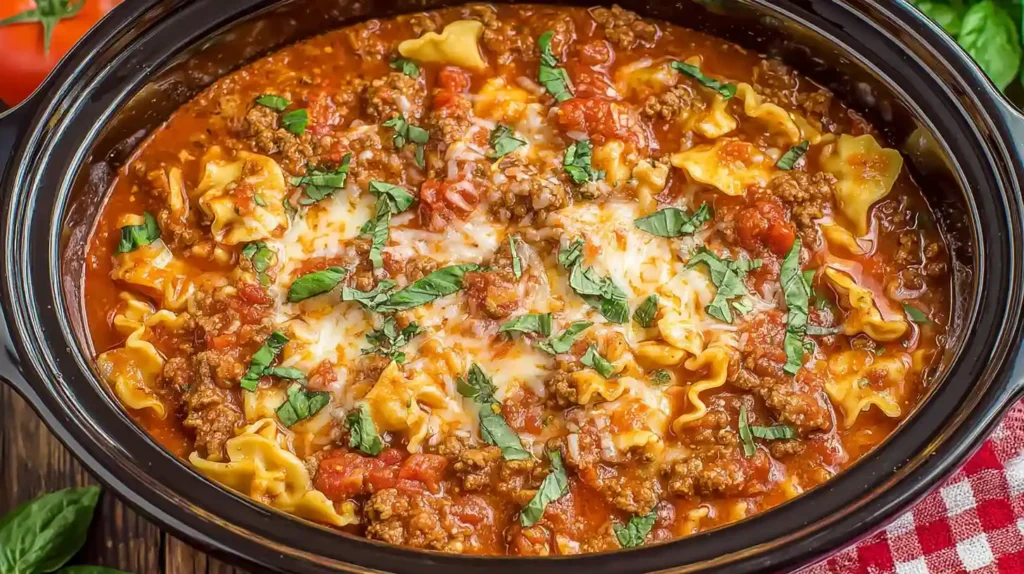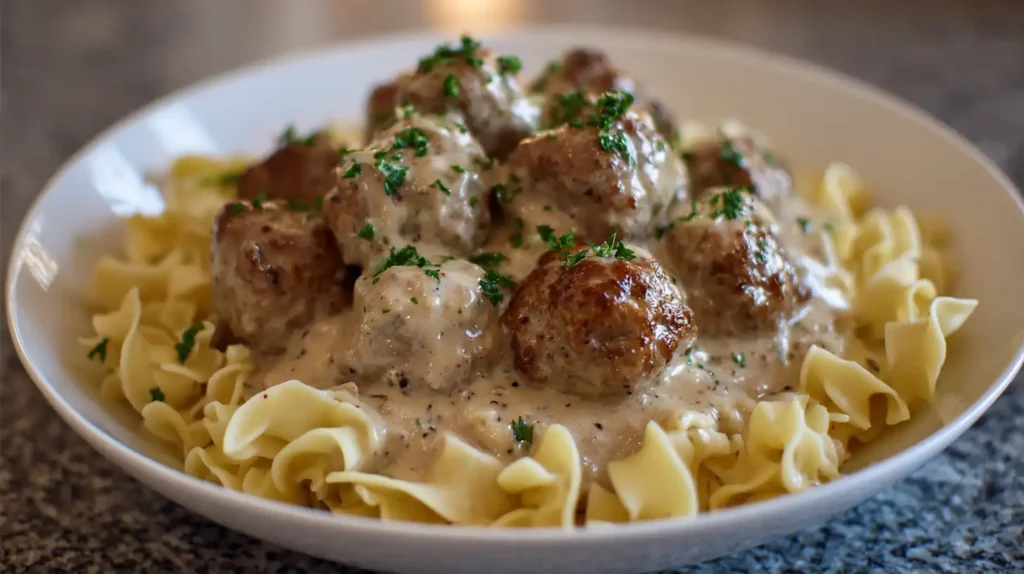There’s something undeniably satisfying about the savory, slightly smoky flavor of a good chicken lo mein, especially when it comes hot from your favorite takeout spot. But what if you could recreate that same magic at home, in less time than it takes for delivery to arrive?
This recipe is built for busy weeknights, picky eaters, and anyone craving a healthier twist on a Chinese-American classic. Whether you’re trying to control your sodium, swap out refined oils, or simply cook a better version than the restaurant down the street, you’re in the right place. Here’s everything you need to make authentic, deeply flavorful chicken lo mein, fast, fresh, and from scratch.
What Is Chicken Lo Mein?
Chicken lo mein is a classic Chinese-American dish made with soft, chewy egg noodles tossed in a savory sauce and stir-fried with tender strips of chicken and crisp vegetables. The term “lo mein” translates to “tossed noodles” in Cantonese, reflecting the quick stir-frying technique that brings the dish together.
At its core, a traditional chicken lo mein recipe includes:
- Lo mein noodles – fresh or cooked egg noodles with a smooth, springy texture
- Chicken – usually boneless thighs or breasts, marinated for extra flavor
- Vegetables – often a mix of bell peppers, carrots, snow peas, bean sprouts, and scallions
- Lo mein sauce – a rich blend of soy sauce, oyster sauce, sesame oil, garlic, and a touch of sugar for balance
Because it’s quick, customizable, and comforting, chicken lo mein has become one of the most popular noodle dishes both in takeout menus and easy weeknight dinner rotations. If you’re searching for an easy lo mein recipe that captures the essence of what lo mein should taste like, this version checks all the boxes: balanced, satisfying, and full of flavor.
The Lo Mein vs. Chow Mein Debate
One of the most common questions people ask is: What’s the difference between chicken lo mein and chicken chow mein? While both dishes are beloved Chinese-American staples and share similar ingredients, the key difference lies in the preparation and texture of the noodles.
| Feature | Chicken Lo Mein | Chicken Chow Mein |
|---|---|---|
| Noodles | Soft, boiled egg noodles | Thin noodles, parboiled then stir-fried until crispy |
| Texture | Tender and saucy | Crunchy or pan-fried |
| Cooking Method | “Lo mein” means “tossed noodles”, sauce and ingredients are combined after cooking | “Chow mein” means “fried noodles”, noodles are cooked until crisp with the sauce |
| Sauce | Heavier, coats the noodles fully | Lighter or reduced to keep crispiness |
So if you prefer soft, saucy noodles packed with flavor, chicken lo mein is your go-to. But if you’re craving something crispy and golden, chicken chow mein might hit the spot instead.
Whether you’re googling chicken lo mein vs chow mein or wondering which one you ordered last night, now you know the real difference.
Why Lo Mein Works
A 2016 academic food sciences overview affirms that lo mein noodles belong to the wheat‑egg noodle family, prized specifically for their thick, springy texture, perfect for absorbing rich sauces in stir‑fries like chicken lo mein. This reinforces why lo mein stands apart: its noodle structure delivers both texture and flavor retention in every forkful.
Ingredients you’ll Need for Perfect Chicken Lo Mein
This chicken lo mein recipe comes together with simple, flavorful components that you may already have in your pantry. For best results, prep everything before you start cooking, this dish moves fast once the heat is on.
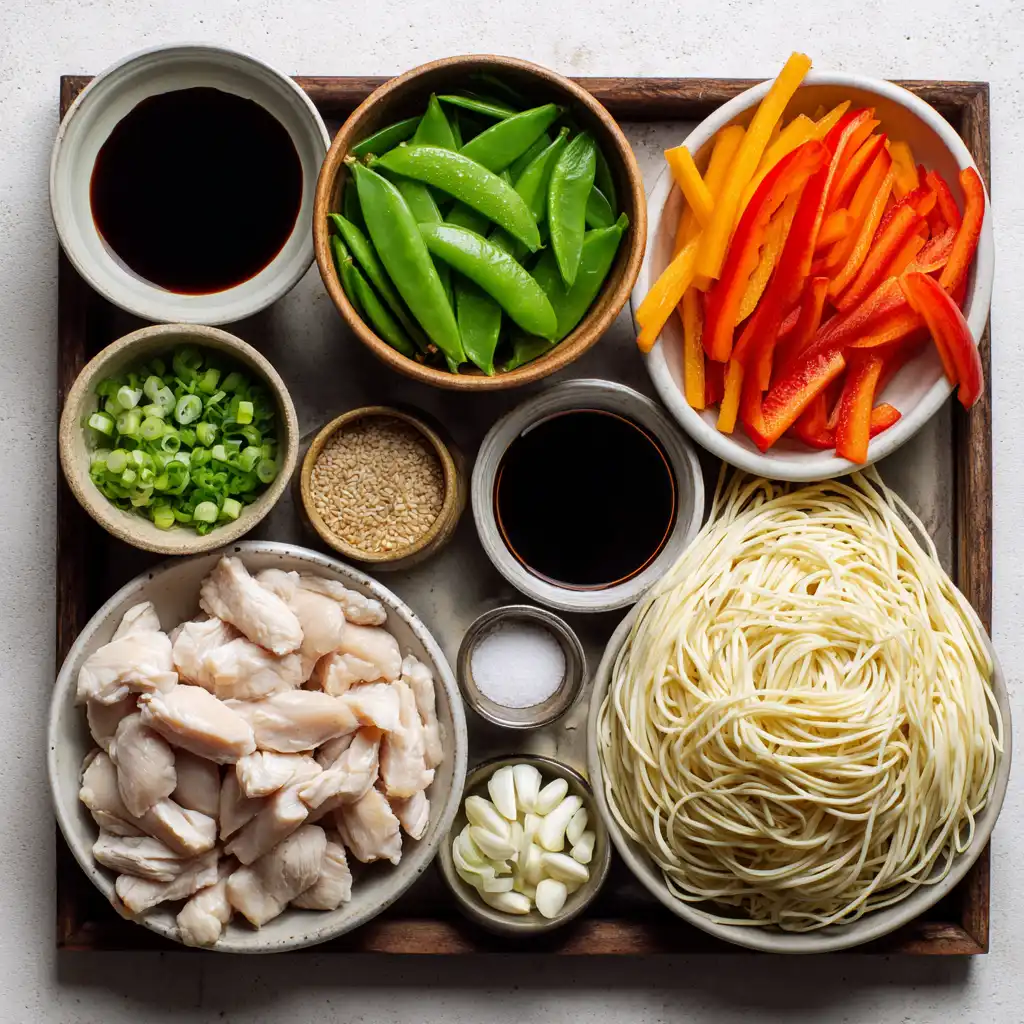
For the Lo Mein
- 8 oz lo mein noodles (fresh or dried egg noodles; spaghetti can be a substitute)
- 1 lb boneless, skinless chicken thighs or breasts, thinly sliced
- 2 tablespoons vegetable oil or neutral high-heat oil
- 1 cup shredded carrots
- 1 red bell pepper, julienned
- 1 cup snow peas or snap peas, trimmed
- 2 cloves garlic, minced
- 3 stalks green onions, chopped (whites and greens separated)
For the Lo Mein Sauce
- 3 tablespoons soy sauce
- 1 tablespoon dark soy sauce (for color and depth)
- 1 tablespoon oyster sauce
- 1 tablespoon hoisin sauce (optional for sweetness)
- 1 teaspoon sesame oil
- 1 teaspoon sugar
- 1/4 teaspoon white pepper or freshly ground black pepper
- 2 tablespoons water or low-sodium chicken broth
You can easily adjust the vegetables based on what’s in your fridge, baby bok choy, broccoli florets, or mushrooms all work beautifully in chicken lo mein.
How to Make Chicken Lo Mein (Step-by-Step)
This easy chicken lo mein recipe is ready in under 30 minutes, and even faster with pre-chopped vegetables or cooked noodles. Here’s how to do it:
Cook the noodles.
Bring a pot of salted water to a boil. Cook your lo mein noodles according to package instructions until just tender. Drain and rinse under cold water to stop the cooking. Toss lightly with oil to prevent sticking.
Make the sauce.
In a small bowl, whisk together all the lo mein sauce ingredients: soy sauce, dark soy sauce, oyster sauce, hoisin (if using), sesame oil, sugar, pepper, and water. Set aside.
Prepare the chicken.
Slice the chicken into thin strips. Optional: marinate in 1 tablespoon soy sauce and 1 teaspoon cornstarch for 10 minutes to enhance texture and flavor.
Stir-fry the chicken.
Heat 1 tablespoon of oil in a large wok or skillet over medium-high heat. Add chicken and stir-fry for 3–4 minutes until browned and cooked through. Remove and set aside.
Sauté the vegetables.
In the same pan, add a bit more oil if needed. Stir-fry garlic, carrots, bell pepper, and snow peas for 2–3 minutes until just tender. Add the white parts of the green onion last.
Combine everything.
Return the chicken to the pan. Add cooked noodles and pour the sauce over everything. Toss well with tongs or chopsticks until the noodles are evenly coated and heated through, about 2 minutes.
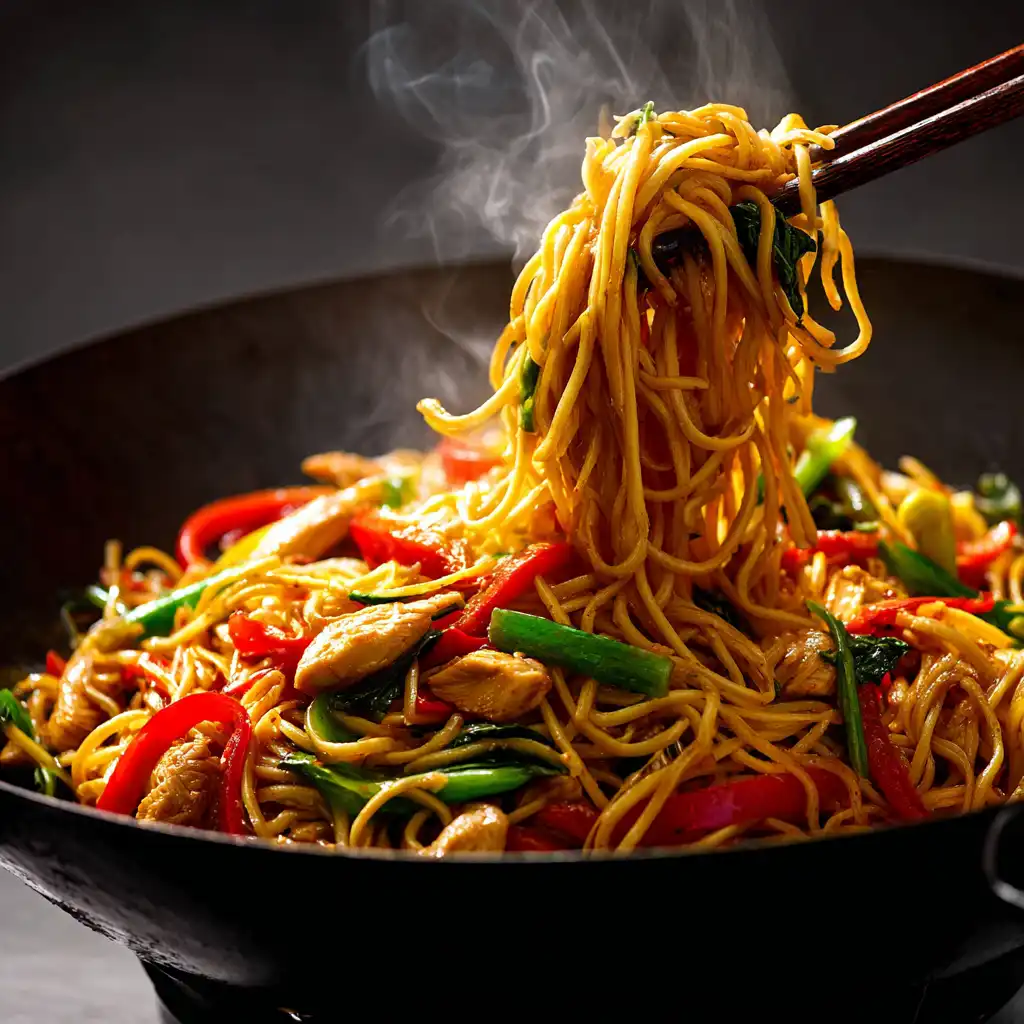
Garnish and serve.
Turn off the heat. Top with green onion greens and an extra drizzle of sesame oil if desired. Serve immediately.
Tips & Restaurant-Style Secrets
Want your chicken lo mein to taste just like the best Chinese takeout? These pro tips make all the difference between a good dish and a great one.
1. Use high heat, always
Lo mein is meant to be cooked fast and hot. Using high heat helps vegetables stay crisp and gives the noodles that slightly smoky “wok hei” flavor that takeout lovers crave. If you don’t have a wok, use a large, heavy-bottomed skillet and preheat it well.
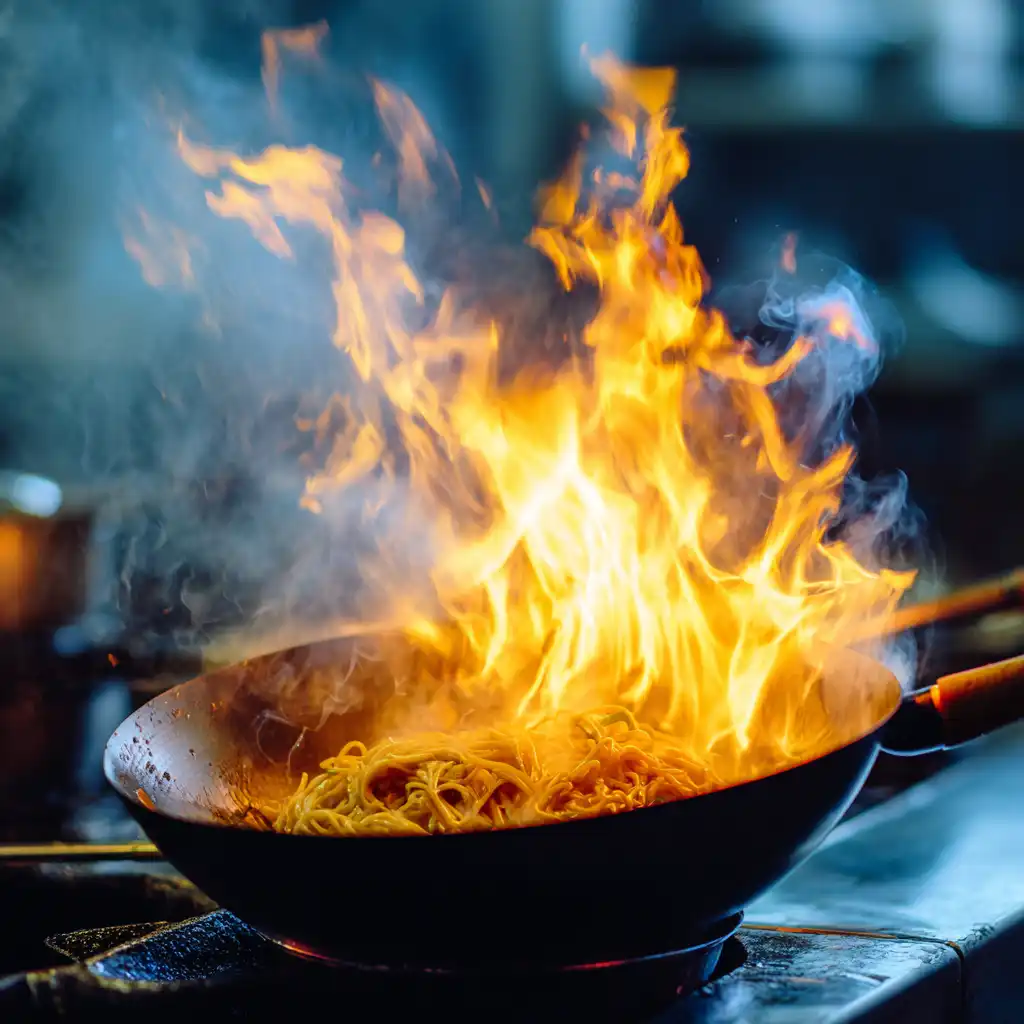
2. Velvet the chicken
For extra-tender chicken like in restaurants, marinate the sliced meat in a mix of soy sauce, cornstarch, and a little oil for 10–15 minutes before cooking. This technique, known as velveting, helps the meat retain moisture and achieve that soft texture.
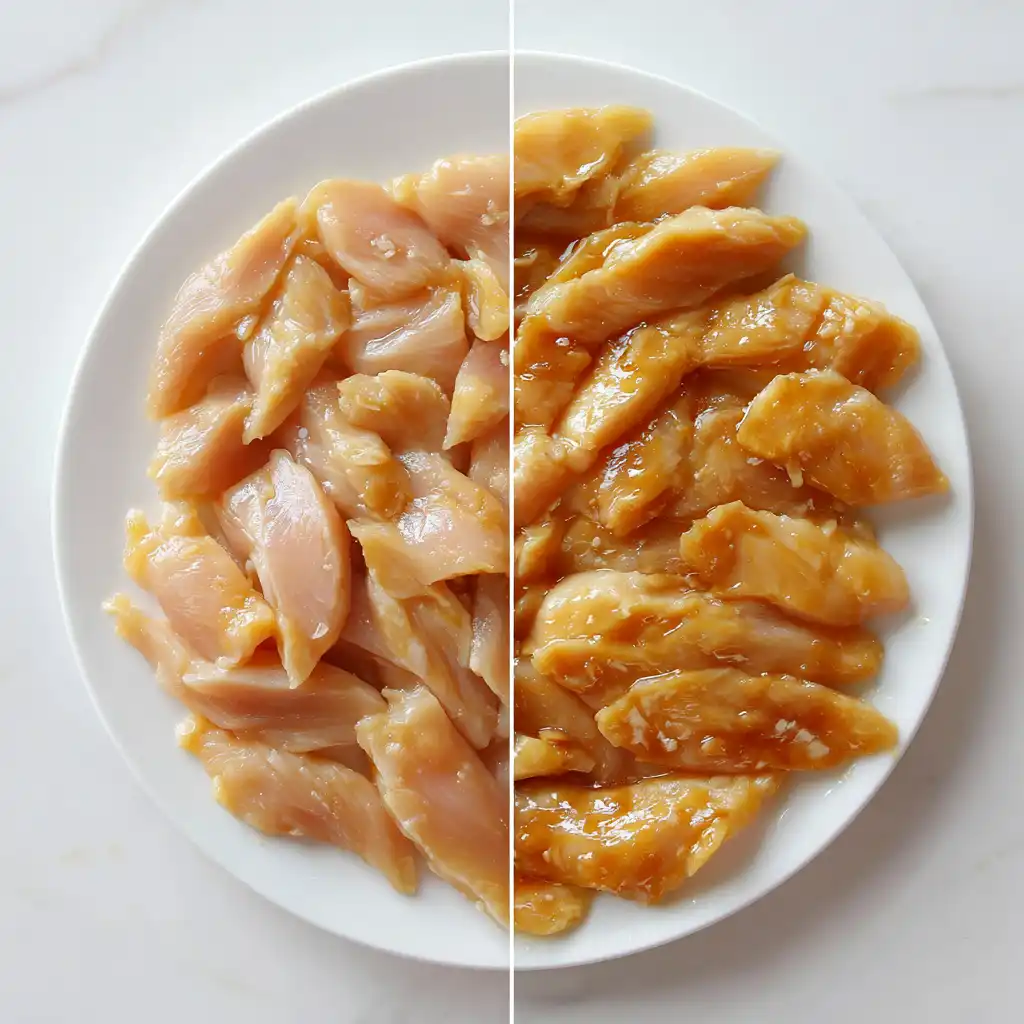
3. Don’t overcook the noodles
Whether you use lo mein noodles or spaghetti, cook them al dente. Overcooked noodles will break down in the pan and absorb too much sauce, leading to a mushy dish.
4. Balance your sauce
Taste your sauce before adding it to the wok. Too salty? Add a touch of sugar or more water. Too bland? A splash of dark soy sauce or oyster sauce adds depth.
5. Finish with sesame oil
A few drops of toasted sesame oil added right at the end enhances aroma and gives your homemade chicken lo mein that authentic finish.
Common Chicken Lo Mein Mistakes (and How to Fix Them)
| Mistake | Fix It |
|---|---|
| Noodles turn soggy | Cook noodles al dente, rinse with cold water after boiling |
| Chicken turns out dry or rubbery | Use the velveting method (soy sauce + cornstarch marinade) |
| Sauce tastes bland | Add dark soy sauce or oyster sauce for umami depth |
| Veggies are too soft | Stir-fry quickly over high heat, don’t overcrowd the pan |
| Noodles stick together | Toss with a little oil after boiling and before stir-frying |
Substitutions & Variations
One of the best things about chicken lo mein is how adaptable it is. Whether you’re managing allergies, eating low-carb, or just cleaning out your fridge, this dish can flex to fit.
Protein Swaps
- Shrimp Lo Mein: Use peeled, deveined shrimp. Stir-fry for 2–3 minutes until pink.
- Beef Lo Mein: Thinly slice flank or skirt steak across the grain.
- Tofu Lo Mein: Use extra-firm tofu, press out moisture, cube, and pan-fry until golden.
- Chicken and Broccoli Lo Mein: Add 1.5 cups of steamed broccoli florets to the mix.
Noodle Alternatives
- Spaghetti or linguine: A reliable substitute if you can’t find traditional lo mein noodles.
- Rice noodles: Makes it gluten-free, but changes the texture, works best in lighter sauces.
- Zucchini noodles or shirataki: Great for low-carb or keto-friendly chicken lo mein.
Vegetable Variations
- Try mushrooms, bok choy, baby corn, napa cabbage, or green beans.
- Frozen stir-fry mixes work in a pinch, just thaw and drain before use.
Sauce Tweaks
- Add chili oil or sriracha for a spicy kick.
- For garlic chicken lo mein, double the garlic and add minced ginger.
- Want a sweet note? Mix in a teaspoon of honey or brown sugar to the sauce.
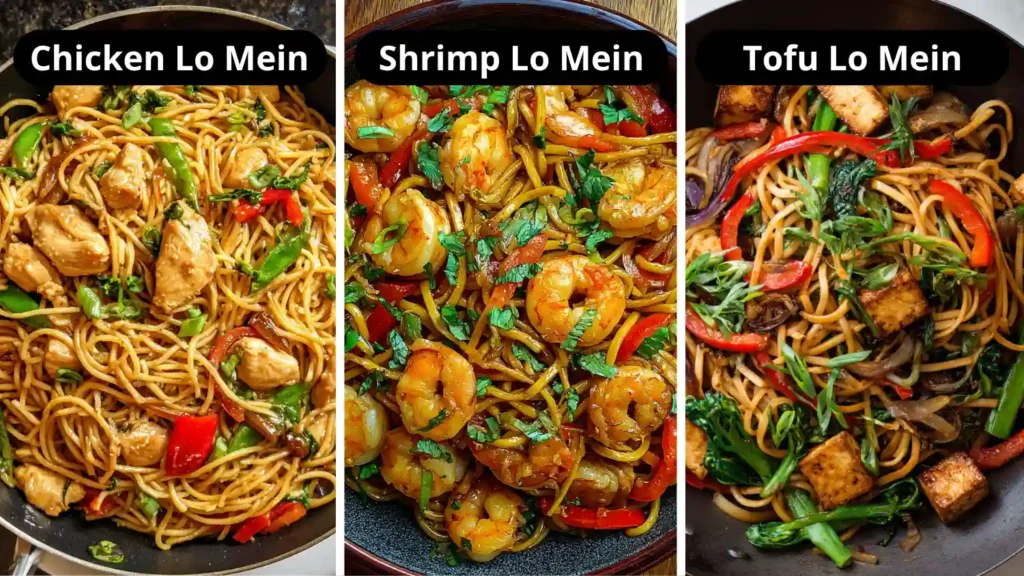
Frequently Asked Questions
The best choice is fresh lo mein noodles, which are soft, slightly chewy, and made with wheat and egg. If you can’t find them, use fresh yakisoba, dried Chinese egg noodles, or even spaghetti as a last resort.
Yes. While not traditional, spaghetti mimics the texture of lo mein noodles well. Just cook it slightly under al dente so it holds up during stir-frying.
Use less oil, opt for low-sodium soy sauce, add more vegetables, and choose lean chicken breast. You can also skip the hoisin or sugar to reduce sweetness and calories.
Store in an airtight container in the fridge for up to 3 days. Reheat in a hot pan with a splash of water or broth to loosen the noodles. Avoid microwaving if possible—it can dry out the noodles.
It’s best eaten fresh, but you can freeze it. Let it cool completely, portion it into freezer-safe containers, and reheat on the stove for best texture.
Quick Reference: Chicken Lo Mein Storage & Substitutions
- 🍝 Noodle – Spaghetti works in place of lo mein noodles
- 🧂 Salt – Use low-sodium soy sauce to cut down on sodium
- ⏰ Clock – Keeps fresh in the fridge for up to 3 days
- ❄️ Freezer – Yes, it can be frozen (store airtight and reheat gently)
Nutrition & Health Angle
Chicken lo mein can be a healthy, balanced meal, if you make it at home. Takeout versions are often high in sodium, added sugars, and oils, but when you control the ingredients, it becomes a nutrient-rich option.
Typical Nutrition Breakdown (per serving)
- Calories: ~450–550 kcal
- Protein: 30–35g
- Carbohydrates: 40–50g
- Fat: 15–20g
- Sodium: ~700–900mg (can be reduced)
These numbers vary depending on your ingredients and portion size, but this version leans lighter thanks to lean chicken, plenty of vegetables, and less oil than most takeout dishes.
Heart-Health Tips
- Use low-sodium soy sauce and skip the hoisin for less sugar.
- Swap out chicken thighs for skinless chicken breast.
- Bulk up with extra veggies to increase fiber and reduce noodle volume.
- Stir-fry in avocado oil or light olive oil instead of generic vegetable oil.
Homemade chicken lo mein fits easily into a heart-healthy, high-protein diet, especially when paired with smarter cooking choices.

Ultimate Chicken Lo Mein Recipe (Better Than Takeout)
Ingredients
Equipment
Method
- Boil the noodles: Cook lo mein noodles (or spaghetti) according to package directions until just tender. Drain, rinse under cold water, and toss with a bit of oil to prevent sticking.
- Mix the sauce: In a small bowl, whisk together soy sauces, oyster sauce, hoisin (if using), sesame oil, sugar, pepper, and water. Set aside.
- Marinate the chicken: Toss sliced chicken with soy sauce and cornstarch. Let sit 10–15 minutes for best texture.
- Stir-fry the chicken: Heat a wok or large skillet over high heat with 1 tbsp oil. Stir-fry chicken for 3–4 minutes until golden. Remove from pan and set aside.
- Cook vegetables: In the same pan, stir-fry garlic, carrots, bell pepper, and snow peas for 2–3 minutes. Add white parts of green onion last.
- Combine and toss: Return chicken to the pan. Add cooked noodles and pour in sauce. Toss everything together until evenly coated and heated through (2–3 minutes).
- Garnish and serve: Top with green onion greens and an optional drizzle of sesame oil. Serve immediately.
Notes
Nutrition Information (per serving)
SERVING: 370g | CALORIES: 498kcal | CARBOHYDRATES: 47g | PROTEIN: 34g | FAT: 18g | SATURATED FAT: 4g | CHOLESTEROL: 96mg | SODIUM: 828mg | POTASSIUM: 650mg | FIBER: 3g | SUGAR: 6g | VITAMIN A: 3100IU | VITAMIN C: 39mg | CALCIUM: 60mg | IRON: 2.6mgPrice of Recipe
- Total Cost: $10.50 for 4 servings
- Chicken: $6
- Vegetables: $2
- Sauces & seasonings: $2.50
(Cost may vary slightly based on brand and region.)
Recipe Notes
- Storage: Refrigerate leftovers for up to 3 days. Reheat in a pan with a splash of water or broth.
- Freezing: Freeze in an airtight container for up to 1 month. Reheat gently to avoid mushy noodles.
- Variations: Use shrimp, beef, or tofu as protein. Add broccoli, cabbage, or bok choy for extra greens.
- Spice it up: Add chili oil or sriracha to the sauce for heat.
- Diet: Heart-Healthy, High Protein, Dairy-Free
Call-to-Action
Did you love this better-than-takeout chicken lo mein? Share it with a friend, pin it for later, and don’t forget to leave a comment with your favorite variation!Conclusion & Next Steps
Now that you know how to make a delicious, authentic chicken lo mein at home, there’s no reason to settle for greasy takeout again. With the right noodles, fresh vegetables, and a simple stir-fry sauce, you can recreate this classic dish in under 30 minutes, better tasting and better for you.
Whether you’re craving a quick weeknight dinner, looking for a high-protein, heart-healthy meal, or just love Chinese cooking, this chicken lo mein recipe delivers every time.
For even more favorites, explore our Ultimate Guide to Panda Express Copycat Recipes, where you’ll find Chow Mein, Orange Chicken, Broccoli Beef, and more.
Explore More Noodle Recipes & Stir-Fry Favorites
Looking for more flavorful weeknight dinners that are fast, fresh, and better than takeout? Keep the wok hot, here are some of our top-rated Asian-inspired dishes to try next:
More Lo Mein Recipes
- Vegetable Lo Mein Recipe – A meatless classic loaded with crisp stir-fried veggies. (coming soon)
- Shrimp Lo Mein – Light, savory, and packed with protein. (coming soon)
- Spicy Lo Mein with Chili Garlic Sauce – For heat-seekers who like bold flavor. (coming soon)
Takeout Favorites Made Healthier
- Beef and Broccoli – Tender beef with sweet-savory sauce and vibrant greens.
- Healthy Orange Chicken – Crispy edges, real citrus, zero guilt.
- Heart-Smart Kung Pao Chicken – Skip the sugar, keep the crunch.
Master Your Stir-Fry Technique
- How to Velvet Chicken Like a Pro – Unlock juicy, restaurant-style texture. (coming soon)
- Best Homemade Stir-Fry Sauce – Make it once, use it on everything. (coming soon)
If you made this dish, let us know how it turned out in the comments, or tag your bowl with #MyLoMeinNight on social media. We love seeing your kitchen wins.
